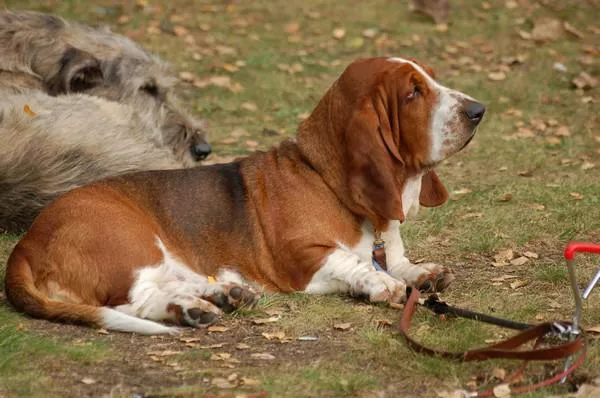Introduction
Choosing the right crate size for your Basset Hound is an important decision that can greatly impact their comfort and well-being. Crates provide a safe and secure space for dogs, serving as their den-like retreat and aiding in house training. When it comes to Basset Hounds, a breed known for its unique physical characteristics, selecting the appropriate crate size becomes even more crucial. This article aims to guide dog owners in determining the ideal crate size for their Basset Hound, considering factors such as breed-specific traits, growth stages, and comfort requirements.
Understanding Basset Hounds
Before delving into crate sizing, it is essential to have a basic understanding of Basset Hounds and their distinctive physical attributes. Basset Hounds are a medium-sized breed known for their long, low-set bodies, short legs, and droopy ears. They have a gentle and friendly temperament, making them popular family pets. These dogs are typically characterized by their deep chests and robust builds, which can influence the size of the crate needed to accommodate their unique proportions.
The Importance of Crate Training
Crate training is a valuable tool for dog owners, helping to establish boundaries, promote positive behaviors, and ensure the safety of both the dog and its surroundings. A crate provides a designated space where the dog can feel secure and comfortable, mimicking the instincts of their ancestors who sought shelter in dens. Crate training also aids in preventing destructive behavior, separation anxiety, and assists in housebreaking, as dogs are naturally inclined to keep their living space clean.
Determining the Appropriate Crate Size
Selecting the right crate size for your Basset Hound involves considering their current size, anticipated growth, and their ability to stand, lie down, and turn around comfortably. It is essential to strike a balance between providing sufficient space for the dog to move and ensuring the crate feels snug and secure, which helps create a den-like environment.
Choosing a Crate for a Puppy
When bringing home a Basset Hound puppy, it is crucial to anticipate their growth and select a crate that can accommodate their future size. Opting for an adjustable or expandable crate that can be resized as the puppy grows is a practical choice. However, it is important to ensure that the crate is not excessively large during the early stages, as this may impede house training efforts. Using a crate with dividers can help create a smaller space within the larger crate, allowing the puppy to feel secure while still providing room for movement.
Crate Sizing for Adult Basset Hounds
For adult Basset Hounds, choosing the correct crate size is relatively straightforward. The dimensions will depend on the individual dog’s measurements, with particular emphasis on height, length, and weight. A crate that is too small can lead to discomfort, while a crate that is too large may diminish the cozy, secure atmosphere that a dog seeks in its den. To determine the appropriate size, the dog should be able to stand up without hitting its head, lie down comfortably with legs extended, and have enough room to turn around easily.
Dimensions and Recommendations
The following dimensions can serve as a general guideline for selecting an appropriate crate size for an adult Basset Hound, but individual variations should be taken into account:
Height: The height of the crate should be at least the height of the dog from the floor to the top of its head, including the ears.
Length: The crate’s length should be around 1.5 times the dog’s length, measured from the tip of the nose to the base of the tail.
Width: The crate’s width should be approximately equal to the dog’s shoulder width, allowing for comfortable movement within the crate.
Considering the typical measurements of adult Basset Hounds, a crate with dimensions around 30-36 inches in height, 36-42 inches in length, and 24-30 inches in width would often be suitable. However, these dimensions may vary based on the dog’s build, weight, and individual preferences. It is advisable to physically measure your Basset Hound and consult with the manufacturer or a knowledgeable pet professional to ensure an accurate sizing decision.
Additional Considerations
While selecting the appropriate crate size is crucial, there are a few additional factors to keep in mind for the well-being and comfort of your Basset Hound:
Ventilation: Ensure the crate has adequate ventilation to promote air circulation and prevent overheating.
Door Placement: Consider the door placement in the crate, ensuring it is accessible and does not pose any obstacles for the dog.
Durability and Safety: Choose a crate made of sturdy materials that can withstand the strength and activity level of a Basset Hound. Ensure the crate has secure latches or locks to prevent accidental escape.
Conclusion
Choosing the right crate size for your Basset Hound is crucial to their comfort, safety, and overall well-being. Considering the breed-specific traits, growth stages, and comfort requirements of Basset Hounds will help guide your decision. Remember to provide ample space for your dog to stand, lie down, and turn around comfortably while maintaining a cozy and secure environment. By carefully selecting a crate that meets your Basset Hound’s needs, you can provide them with a safe and enjoyable space that serves as their den-like retreat for years to come.


